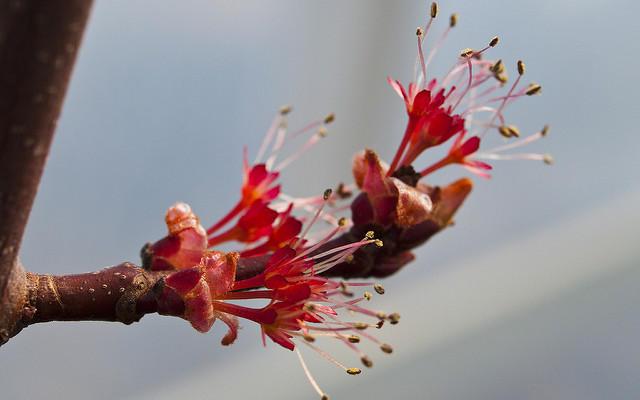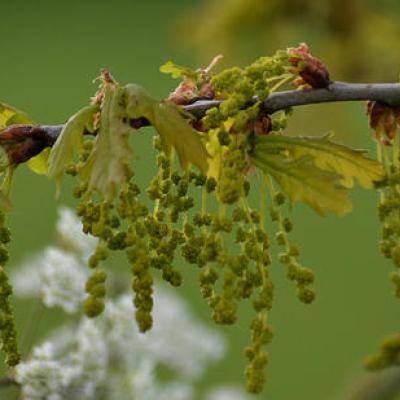
The exquisite spring flower of red maple tree.
New Hampshire is experiencing one of those few rare and special weeks right now. About 48 weeks of the year, the New Hampshire landscape is pretty homogenous; from a distance our deciduous trees can all look the same: either a blanket of green leaves, or nothing but sticks. But during a few brief weeks in the fall and in the spring – trees show their true colors.
New Englanders take pride in our brilliant fall foliage season, but our ephemeral spring foliage season often passes without nearly as much fanfare… or tourism! Meanwhile, consider Washington DC, which celebrates the spring foliage season each year with their Cherry Blossom festival. Given the severity of our winters, we really should make a bit more of a fuss over these lovely spring colors.

Latitude affects when the tree buds start popping, so depending on where you are in the state annual bud burst is either wrapping up or just kicking off. Trees in southern parts of the state flower and leaf-out before northern parts. Tree flowers can also reveal what forest community you’re looking at (if you know what to look for), even what type of soil is underneath. Imagine you’re driving along I-89 or I-93, and you see this incredible gauzy crimson wash in the valley – those are red maple or silver maple flowers. Those maples prefer river flood plains and valleys, so you know there's wetland and a rich wildlife habitat beneath. But New Hampshire is also characterized by rocky till smeared across the hillsides. When the last glacier melted, it washed enriched soil into small pockets, and dragged silt and sand to the coastal plain, leaving compacted, dry, stony soil on interior hillsides.

In the mountains, you'll see different color tree flowers. The pale, lime green buds indicate birch, beech and oak all thriving on rocky, dry slopes that abound in our Granite state. Sugar maples bud out in a lemon yellow; yellow is also the color of the hanging streamers of oak stamens – pollen bearing parts of otherwise an inconspicuous flower. Individually these tiny flowers are practically invisible, but put millions of them together on forested hillside or in a river valley and suddenly the landscape seems awash in the soft, shimmering colors of spring!
And just like that the season’s over. It becomes a wall of green, but vestiges remain. Pollinated tree flowers bear fruit and seeds: acorns, beech nuts, tiny birch seeds, and those little brown helicopter-y things that paste themselves to your car (also known as maple "samaras")! And those seed crops drive populations of wildlife species. The annual timing of bud burst can also indicate changing environmental conditions, and can raise questions. Like what if buds burst early and insects remain dormant, or if warblers return just before a late season snowstorm when insects disappear for a week?
No doubt life will find a way.
